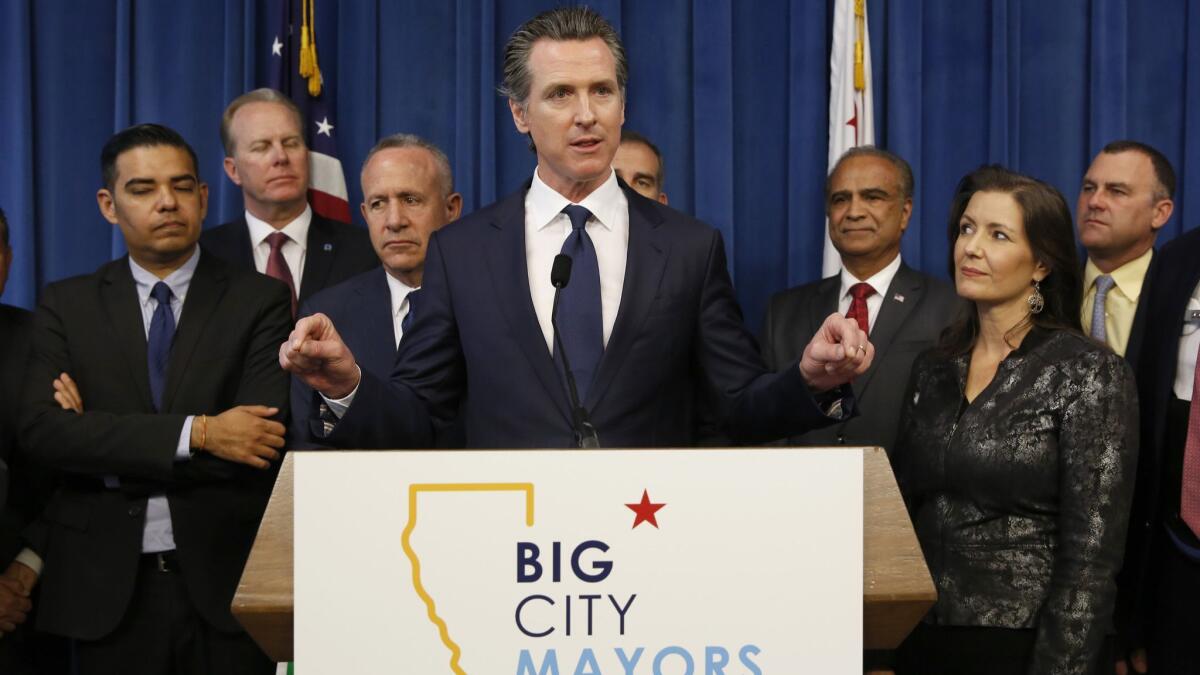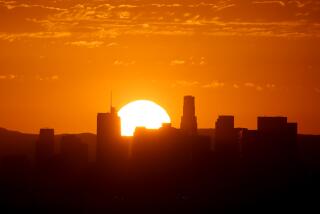Californians think the state is going in the wrong direction. Here’s why

It just doesn’t jibe. These are pretty good times by historical standards. But most people seem ticked off.
Look back over the last 90 years and compare them with today:
The Great Depression and Dust Bowl wiped out millions of people financially.
World War II killed around 420,000 Americans.
There was a prosperous postwar boom, but also the Korean War.
The ’60s and early ’70s were violent and ugly: civil rights bloodshed, deadly riots, America torn apart by the Vietnam War, the public made more cynical by Watergate.
Then long lines for gasoline, sky-high inflation, 9/11 and terrorist attacks, wars in Iraq and Afghanistan, the Great Recession.
Some of us lived through most of those nightmares.
Today should be considered hog heaven: The economy is purring. The unemployment rate in California is down around 4%, compared to 12%-plus just seven years ago. Hot wars have cooled. We’ve got vaccines now for virtually every virus, unlike 65 years ago. Water reservoirs are full.
But as veteran Democratic political strategist Darry Sragow notes: “The whole country is clinically depressed. A lot of people in California are clinically depressed.”
Why? He looks at the big, overarching picture, not the common everyday gripes.
“This is an incredibly difficult time of transition from the industrial age to the age of technology,” says Sragow, publisher of the California Target Book, which handicaps congressional and legislative races.
“The massive changes in the way we live our daily lives and the way we can earn a living are giving the entire state and country one big headache. This is a very scary time because everything around us is challenging.
“The other thing is that the way we communicate has become very isolating. We communicate by email and social media. We have less human contact with each other.”
Yep. And that makes the faceless, soundless contact increasingly coarser and less civil.
The gloomy mood shows up in polls when an age-old question is asked: “Do you think things are generally going in the right direction or the wrong direction?”
The Public Policy Institute of California recently asked that question about this state. And the reply among likely voters was overwhelmingly negative: 41% right direction, 54% wrong direction.
The voters’ view of California hasn’t been that negative in a PPIC poll since 2014, when we were starting to emerge from the recession and suffering a severe drought.
Californians have a much worse opinion of the nation’s direction, according to another recent poll by the nonpartisan UC Berkeley Institute of Governmental Studies. It found only 28% of registered voters thought the country was headed in the right direction and 72% believed it was on the wrong track.
That’s largely because President Trump is so unpopular in this state. In the IGS poll, just 31% approved of Trump’s job performance and 69% disapproved.
But because Democrats lopsidedly control state government, you might think California’s deep-blue electorate would have a more optimistic view of the state’s direction. Why don’t they?
“People are on edge,” says Mark Baldassare, PPIC’s president and pollster. “There’s a number of things going on that people feel nervous about. Opinions seem to be a lot more negative than the economics call for now.”
He asked likely voters another age-old question: “What do you think is the most important issue facing people in California?” And for the first time ever, homelessness appeared in in double digits, the pollster says.
In fact, homelessness placed No. 1 at 16%, ahead of even jobs and the economy, at 13%. Then came housing costs and immigration, each at 11%, and the environment, 10%. Taxes and state spending were at 9%.
In Los Angeles County, 24% of voters interviewed called homelessness the state’s No. 1 problem. Nothing else was close.
The latest estimates are that L.A.’s growing homeless population is 59,000 in the county and 36,000 in the city. There are an estimated 130,000 homeless people statewide, but that’s an old figure that has almost certainly grown.
Republican political consultant Richard Temple says he has conducted focus groups in which the people interviewed make these kinds of comments about homelessness: “’I don’t feel safe. I can’t wear my rings; I keep my stuff in my front pockets.’ ‘I can’t walk around in sandals on the streets anymore because of the disease.’ ‘Nobody’s doing anything about it.’”
Actually, state and local governments are trying. At least they’re throwing money at it. Gov. Gavin Newsom and the Legislature budgeted $1 billion to fight the problem, including $650 million for local governments to build shelters and $265 million for mental health treatment.
For affordable housing, they budgeted $1.75 billion to help local governments boost production.
And on Tuesday, Newsom signed a partial rent control bill. It will cap annual rent increases at 5% plus inflation for apartments at least 15 years old.
“Beyond housing,” Baldassare says, “people are worried about healthcare costs, mass shootings, someone they know being deported. There are a number of things they’re worried about.”
Including high taxes, a California trademark.
And horrible traffic congestion plus nitwit drivers.
The IGS poll found that half the state’s registered voters have thought about leaving the state.
“People are very scared and have no confidence in the future,” Sragow says. “That’s exactly how you get a Donald Trump [elected].”
Hey, times are good — but apparently not by 21st century standards.
More to Read
Start your day right
Sign up for Essential California for news, features and recommendations from the L.A. Times and beyond in your inbox six days a week.
You may occasionally receive promotional content from the Los Angeles Times.







